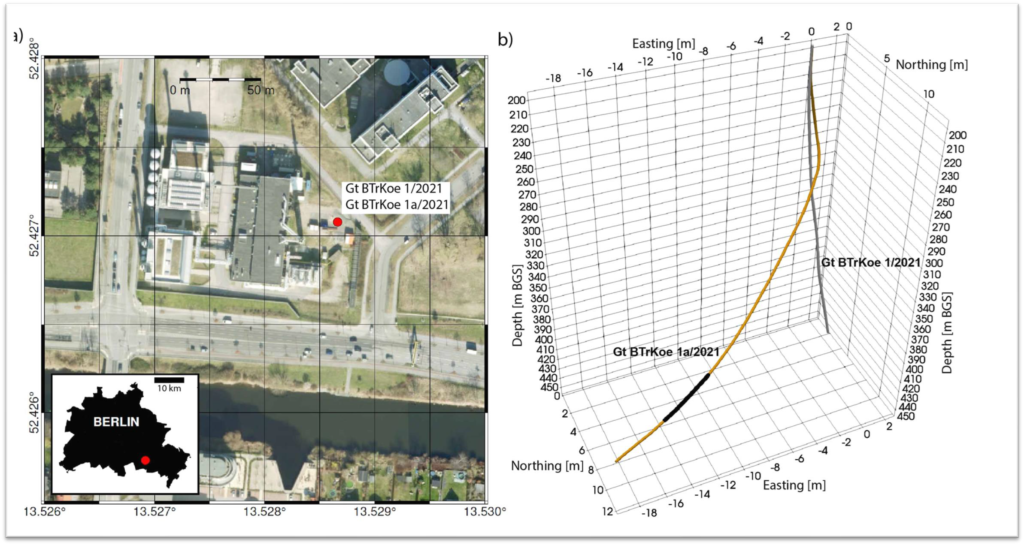An update from the Berlin site
At the recent General Assembly in Bochum, the Berlin site has given an update of the progress that has been made. This will be discussed, together with a recap of the site’s goals and objectives.
At the Berlin Adlershof site, where a large-scale Aquifer Thermal Energy Storage (ATES) system is being implemented. Designed to support the energy transition in urban environments, the installation will store up to 30 GWh of thermal energy, leveraging excess summer heat from a wood-fired power plant for reuse in winter. This renewable heat will be fed into the existing district heating network operated by BTB GmbH, reducing reliance on fossil-based energy sources and enhancing seasonal energy flexibility in Berlin’s southeast.

Steady Progress and Recent Milestones
The project has already achieved several key milestones:
- A sidetrack to the research well was successfully drilled and completed, laying the foundation for detailed subsurface investigations.
- The well is being used for geochemical and microbiological characterization, hot push-pull testing (HPPT) for thermal performance evaluation, and environmental impact assessments.
- A fibre optic cable was installed along the production casing for Distributed Temperature Sensing (DTS). This technology enabled real-time temperature monitoring with a high spatial resolution (0.5 m every 130 seconds), proving especially useful during gravel pack backfilling and well cementation.
- In September 2024, a filter development and step-rate test was carried out, providing early insights into the well’s hydraulic behavior.
By June 2025, preparations for the HPPT had nearly concluded:
- The test equipment and pump are ready for deployment.
- All necessary permits have been obtained, and the wellhead has been fully prepared.
- A service team is scheduled for on-site installation starting June 23rd, marking the beginning of an intensive testing phase.
Hydrochemical Profile and Potential Risks
Early hydrochemical monitoring has revealed a salinity of 39 g/L, consistent with other Jurassic aquifers in Berlin. While gas concentrations are low (over 97% nitrogen), temperature-induced changes present a potential risk of carbonate scaling. As the temperature increases during operation, carbonates may reach saturation, which could impact system performance and longevity. Ongoing modelling and monitoring will address these concerns to ensure safe and efficient long-term use of the storage system.
Looking Ahead: Testing, Modelling, and Engagement
With the groundwork in place, the next phase of the project includes:
- HPPT execution by GFZ, to assess the well’s thermal performance under near-operational conditions.
- Microbiological sampling during HPPT, coordinated by BRGM, to evaluate microbial activity and biofouling risks.
- Modelling of chemical interactions under varying operational scenarios (BRGM).
- Interviews with regulatory authorities, conducted by BGS, to support knowledge-sharing and regulatory alignment.
- A potential pump-sensor test, led by FH-IEG, is under consideration to further evaluate system integration and data collection technologies.

PUSH-IT is a project funded by the European Union’s Horizon Europe research and innovation programme under grant agreement No 101096566.
Funded by the European Union. Views and opinions expressed are however those of the author(s) only and do not necessarily reflect those of the European Union. Neither the European Union nor the granting authority can be held responsible for them.
